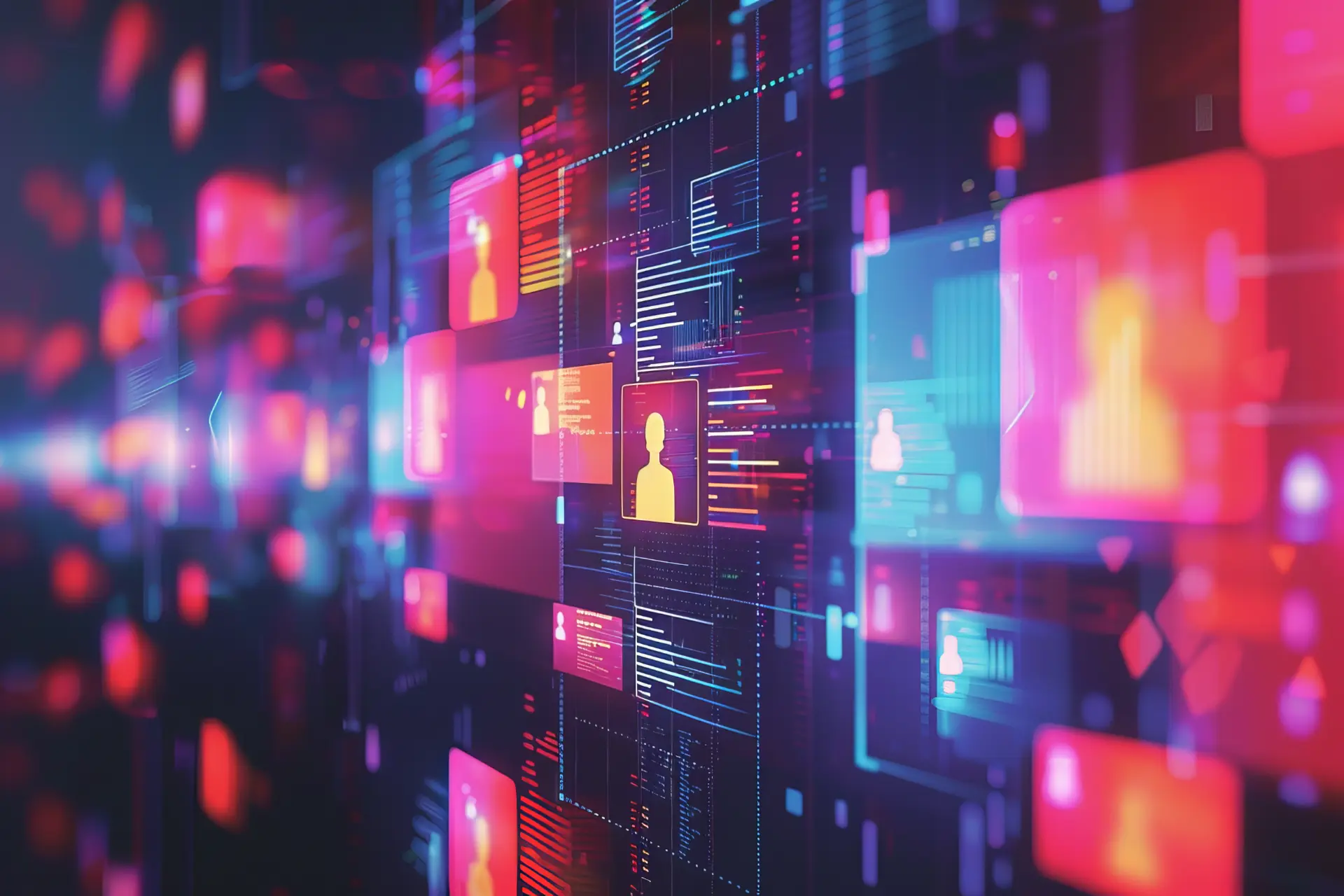Table of contents
- The origins of social media exploitation
- Online grooming and manipulation techniques
- Social media and human trafficking
- The impact of exploitation on minors
- The responsibilities of social media platforms
- The role of law enforcement and international cooperation
- Digital education and prevention
- Towards more effective regulation
The universe of social networks has become one of the main spaces of connection between individuals, communities and cultures. However, this apparently free and democratic environment hides a growing threat: social media exploitation.
Behind the sharing of photos, comments and viral content, there are dynamics of sexual exploitation, manipulation and recruitment that involve popular social media platforms, exploited children, adolescents and vulnerable adults.
This article takes an in-depth look at the mechanisms of social media exploitation, the techniques used by criminals, the use of online platforms for recruitment into human trafficking, and the role of law enforcement in combating this modern form of digital slavery.
The origins of social media exploitation
Social media exploitation refers to the use of social media platforms to manipulate, groom, recruit, or control individuals, often for the purpose of sexual, economic, or psychological exploitation.
This type of abuse has gained global attention with the explosion of platforms such as Facebook, Instagram, TikTok, WhatsApp, and Telegram, which have become fertile ground for those seeking potential victims.
Social media offer online spaces where exploiters can observe, select and contact individuals with extreme ease, thanks to public data, comments, likes and geolocation.
Vulnerability is amplified by the absence of filters, the superficiality of interactions and the illusion of security offered by the digital environment.
Online grooming and manipulation techniques
One of the most disturbing aspects of social media exploitation is the sophistication with which exploiters operate. The approaches are often disguised as romantic relationships, job offers, promises of success or visibility.
1. Grooming online
Through grooming, predators gradually build trust with the victim, especially when it comes to exploited children. The goal is to break down emotional defenses until the victim is convinced to share information online, intimate images, or meet in person.
2. Catfishing
Scammers create fake profiles with attractive photos and fake identities, often stolen from real users, to gain the victim’s trust. Catfishing is a powerful weapon, especially when combined with elements of blackmail or sextortion.
3. Sextortion and blackmail
Once the compromising images or videos have been obtained, the lure may threaten to make them public in order to extort money or force the victim to produce new content. This practice is especially devastating among young people and can lead to serious psychological trauma.
Social media and human trafficking
Human trafficking has found a powerful ally in social media. Traffickers use closed groups, encrypted messages and hashtags to identify and engage people in fragile situations: runaway girls, unaccompanied minors, migrants, users with mental health problems.
Contacts often begin with job offers as models, babysitters or artists, which hide the reality of sexual exploitation.
In documented cases, traffickers have created sophisticated networks on Instagram or TikTok to locate potential victims , move them across borders, and keep them in a state of psychological coercion through threats or emotional dependence.
The algorithmic component of social media favors the rapid dissemination of content, but also the persistence of this trafficking in less regulated online platforms.
The impact of exploitation on minors
Exploited children are the most vulnerable victims of social media exploitation. According to UNICEF, millions of children around the world are exposed to risks every time they access social media, especially when they lack supervision, digital education and tools to defend themselves.
Abuse can have serious psychological, social and legal consequences: anxiety, depression, isolation, loss of trust in adults. The most serious cases result in suicide, international trafficking or imprisonment in criminal networks.
Some pedophiles use social media to create “invisible networks” in which they share illegal materials, exchanging photographs and videos with other members of the network. The platforms are not always able to intervene promptly, both due to the amount of content and the use of encrypted codes and jargon.

The responsibilities of social media platforms
Internet giants are under increasing pressure to tackle social media exploitation . Facebook, Instagram, and TikTok have adopted measures such as automatic moderation, child pornography image recognition, blocking of suspicious accounts, and machine learning systems to identify risky behavior.
However, these tools are not foolproof. Exploiters move quickly from one online platform to another, taking advantage of loopholes in control systems. The dark web and encrypted apps like Telegram or Signal are increasingly being used to evade controls.
Furthermore, many social media platforms base their business model on user profiling, which can indirectly incentivize behavior analysis without sufficiently protecting the privacy of minors.
The role of law enforcement and international cooperation
Law enforcement agencies are stepping up action against social media exploitation through dedicated task forces, collaboration with Europol, Interpol and NGOs such as ECPAT and Save the Children.
Investigations require highly technological skills, as they often require tracking IP addresses, analyzing encrypted conversations, and working undercover in closed groups. In Italy, the Postal Police plays a key role in identifying and stopping human trafficking networks that thrive on social media .
However, without effective international cooperation, many exploiters manage to escape justice simply by changing countries or platforms.
Digital education and prevention
Prevention is the most effective weapon against social media exploitation. We need digital education that goes beyond “don’t accept strangers.” Young people need to be taught to recognize manipulative behavior, use advanced privacy settings, report abuse, and not share sensitive information online.
Parents also have a central role, not in the sense of invasive control, but as digital educators. They must establish an open dialogue and update themselves on the technological tools that their children use daily.
Schools can contribute with training courses on cyber security, respect for the body, awareness of online relationships and the right to privacy.
Towards more effective regulation
On the regulatory level, the European Union has started the process for the Digital Services Act, which imposes more stringent obligations on platforms in content moderation and the protection of minors. However, implementation at the national level and verification of the effective application of the rules remain essential.
Social media exploitation is an evolving crime, changing shape based on technological advances. Only an integrated approach – combining law, technology and education – can stem its devastating effects.
To conclude…
Exploitation through social media is a real and growing threat. Victims, often very young, are manipulated and abused in a context where visibility is maximum but security is minimal.
It is essential that online platforms, institutions, families and civil society work together to protect the most vulnerable users and defuse the mechanisms that fuel human trafficking, sexual exploitation and digital abuse.
We invite you to share your opinion or experience in the comment form below: every testimony is important.
Questions and answers
- What is social media exploitation?
It is the abusive use of social media platforms to exploit, manipulate, or recruit people, often for sexual or criminal purposes. - Who are the most common victims?
Children, teenagers, migrants and vulnerable people are the main targets of online exploiters. - What techniques do groomers use?
Grooming, sextortion, catfishing, blackmail and emotional manipulation are among the most common techniques. - Are social media liable?
Platforms are jointly liable if they do not implement measures to prevent, control and remove illegal content. - How do law enforcement agencies intervene?
Through digital task forces, international collaborations and investigations with advanced technological tools. - What can I do to protect my children?
Digital education, open dialogue, use of privacy settings and monitoring online activities. - Does human trafficking also occur through social media?
Yes, many traffickers use social media to lure and move vulnerable people into exploitation networks. - Can illegal content be removed?
Yes, but it is essential to promptly report it to the platforms or the postal police. - How can I recognize a stalker?
Profiles that are too perfect, insistence on intimate content, requests to move to other apps are warning signs. - Are there laws to combat exploitation on social media?
Yes, but they are constantly being updated. The European Digital Services Act is one of the most recent instruments.
